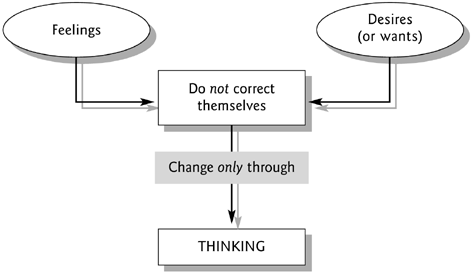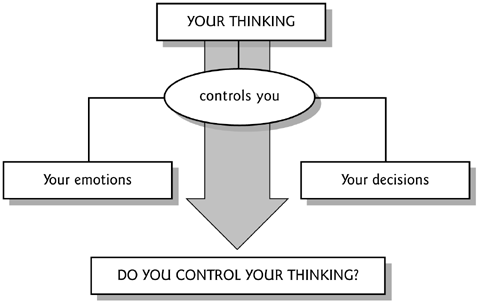Westside Toastmasters is located in Los Angeles and Santa Monica, California
Understanding That You Have a Special Relationship to Your Mind
It should now be clear that everyone lives in a special and intimate relationship to his or her mind - at least unconsciously. The trick is to make that unconscious relationship conscious and deliberate. All of our activity is a product of inward ideas of who and what we are, ideas of what we are experiencing (from moment to moment), of where we are going (our future), of where we have come from (our past). And, in addition, all of these ideas are in a state of continual interplay with our emotions and feelings about them. Emotions and feelings function as ongoing evaluators of the quality of our lives and circumstances.
For every positive thought the mind "believes," the mind naturally tends to generate a positive emotion to fit it. Conversely, for every negative thought, the mind tends to generate a negative emotion. If we explicitly recognize the continual interrelationships among these three functions of our mind, we will gain a central insight that we can begin to use to our advantage. Then we can begin to exercise command over our own mind's functions. Let's look into this idea more closely.
We experience joy, happiness, frustration, pain, confusion, desire, passion, and indifference because we give a meaning to every situation we experience, because we think about it in a particular fashion, and because we connect it to feelings we experienced in what we perceived as similar or related circumstances. The meaning we create can be grounded in insight, objective reality, a fantasy, or even a dysfunctional interpretation of reality. For example, two people in the same situation may react completely differently, with one person experiencing pain and frustration while the other experiences curiosity and excitement.
Consider two employees faced with the task of improving office procedures in order to improve productivity. The first experiences resentment at being required to change what appears to be "working just fine." This person gives a negative meaning to the task of improvement, considering it unnecessary and time consuming (when so many other things are more important). Given the negative thinking this person is engaging in, s/he will feel negative emotions about the task.
In the same situation, another person might welcome the opportunity for improvement. Defining the situation as a chance to be creative and to think independently about ways to improve procedures, she/he looks forward to the task. Positive, rather than negative, emotions result from such a definition.
The actual task at hand is precisely the same. Nevertheless, the difficulty or ease with which a person handles the challenge, the decision to take up the challenge or avoid it altogether, ultimate success or failure, is determined fundamentally by the manner in which the situation is interpreted through one's thinking (Figure 4.4). Different emotions follow from these differences in thought and action.
Figure 4.4. We change undesirable feelings and desires by changing the thinking that is leading to them.

When we understand the interrelated roles of thoughts, feelings, and motivation, when we can see that for every feeling state we experience, a related thought process exists that motivates us to some action, we can begin to analyze thoughts underlying our emotions and desires. If I am frustrated in a meeting, I can ask myself: What is the thinking in my mind that is leading to this feeling of frustration? What exactly am I frustrated with? What is the thinking that leads me to be frustrated (Figure 4.5 & 4.6)?
Figure 4.5. By taking command of our thinking we can take command of all three functions of the mind.

Figure 4.6. Your thinking controls every part of your life. But do you control your thinking?

Test the Idea |



